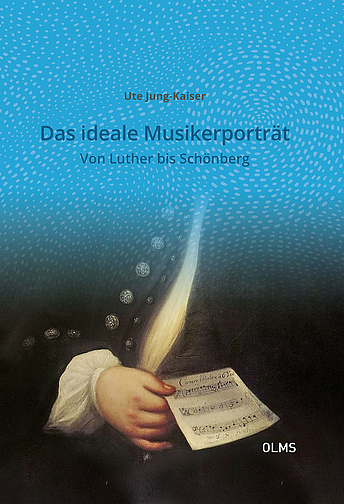Jung-Kaiser
Das ideale Musikerporträt
ISBN 978-3-487-15792-4
englischThere are more than enough pictures of musicians – fictional, idealised, anecdotal, intimate or romanticised. The more recent the depiction, the richer the choice. It is all the more necessary to ask which of these pictures “hit the mark”. Which of them tell us about the things that defined the artist’s personality: their visions, dreams and desires, their successes and disappointments, the powers that motivated them, their principles and initial inspirations? Which of these pictures really deserve the name of “portrait”? In twenty-four individual studies of artistic personalities such as Lully, Bach, Haydn, Schubert, Liszt, Verdi, Wagner and Ravel, Ute Jung-Kaiser investigates these questions with the help of to some extent unknown or unfamiliar pictures. Musicological reservations about the expressive value of portraits are well known, but can be aesthetically refuted. Comparative examinations help us to decide when a portrait can be rejected and when it succeeds. The hypothetical portrait of the mythical singer Orpheus, the absolute ideal of the musician, achieves the status of a model and becomes the prototype of a sought-after ideal.
Bilder von Musikern – fiktive, geschönte, anekdotische, intime oder verklärte – gibt es mehr als genug. Je jünger die Darstellung, desto reichhaltiger das Angebot. Umso mehr stellen sich die Fragen: Welche dieser Bilder treffen den Kern? Welche sagen etwas aus über das, was die Künstlerpersönlichkeit definierte: ihre Erfahrungen, ihre Visionen, Träume und Wünsche, ihre Erfolge und Enttäuschungen, ihre motivierenden Kräfte, Leitbilder und Initialzündungen? Welche dieser Bilder verdienen wirklich die Bezeichnung „Bildnis“?
In vierundzwanzig Einzelstudien zu Künstlerpersönlichkeiten wie Lully, Bach, Haydn, Schubert, Liszt, Verdi, Wagner oder Ravel geht Ute Jung-Kaiser diesen Fragen unter Rückgriff auf z. T. unbekanntes und entlegenes Bildmaterial nach. Musikwissenschaftliche Vorbehalte gegenüber der Aussagekraft von Bildnissen sind bekannt, aber ästhetisch widerlegbar. Vergleichende Betrachtungen helfen bei der Entscheidungsfindung, wann ein Porträt zu verwerfen und wann es gelungen ist. Dabei kommt dem hypothetischen Bildnis des mythischen Sängers Orpheus, dem Ideal eines Musikers schlechthin, Vorbildcharakter zu und erhebt es zum Prototypen des gesuchten Ideals.


